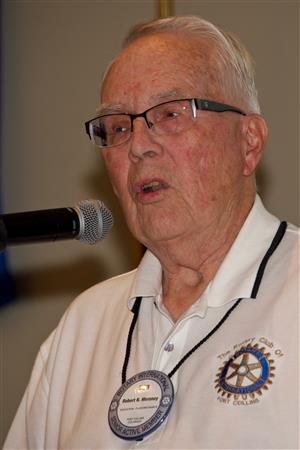 Last week, FCRC member and self-described polymath Bob Meroney presented, “James Pierson Beckwourth: Black Mountain Man; Gaudy Liar?” (Spoiler alert - much of the content of his “tall tales” may be true).
Last week, FCRC member and self-described polymath Bob Meroney presented, “James Pierson Beckwourth: Black Mountain Man; Gaudy Liar?” (Spoiler alert - much of the content of his “tall tales” may be true).Mountain men of the expanding West (think the lands of the Louisiana Purchase and later beyond) tended to be colorful characters, often with a picturesque appearance and sometimes famous for their storytelling. After all, they were often alone in sparsely-inhabited places, so who could refute their tales?
Beckwourth was born in Virginia around 1800, the son of Revolutionary war participant / plantation owner. His mother was a slave so James was not a free man until he was emancipated sometime after 1809. In that year he moved with his father to St Louis (AKA the edge of the frontier) where he was apprenticed to a blacksmith, the first of his many occupations. He joined Ashley’s 100, a famous group of early fur traders, before becoming a businessman (owned hotels and stores, including one in Denver), a scout in 2 wars, an Army guide, an explorer (discovered Beckwourth pass-a shortened route through the Sierras for the California Gold Rush) and so much more.
Growing up on the frontier, very early in life he experienced interaction between the white man and the Indians - both good and bad. He had several Indian wives and spent several years with various Indian tribes, including 10 years as a Crow chief.
Next, Bob gave us a sampling of the stories told by James Beckwourth - how he saved Ashley (of Ashley’s 100) on more than one occasion; his 95-mile foot race with the Blackfeet; several bear stories and his wooing and eventual marriage to Princess Pine Leaf. He participated in several Indian raids and wars, often serving as a communicator between the Whites and the Indians.
In 1856 he dictated his autobiography to TD Boner , the primary resource for this information. In 1860 he returned to Denver and married a Sioux. He was a scout in 1864 at Colorado’s Sand Creek Massacre. In 1866 he died; possibly poisoned by a Crow.